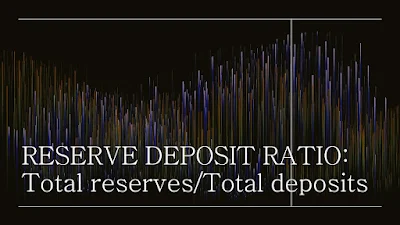Monetarism (also referred to as “monetarist theory”):
- It is a fundamental macroeconomic theory that focuses on the importance of the money supply as a main driver for economic growth.
- According to the theory, monetary policy is a much more effective tool than the fiscal policy for stimulating the economy or slowing down the rate of inflation.
MONEY SUPPLY:
- The money supply is the total amount
of money—cash, coins, and balances in bank accounts—in circulation among the public at
a particular point of time.
- The money supply determines the health
status of an economy.
- Any change in the money supply directly affects and
determines production, employment, and price levels in the economy.
Different Measures of Money Supply:
- Money supply is classified into various measures on the basis of its functions.
- To adequately capture the variety of assets, Post 1998, the RBI publishes figures for four alternative measures of money supply, viz. M0, M1, M2 and M3 etc
- Different class of Money has different impact upon the Economy so effective predictions can be made about the likely effects of changes in the different components of money supply.
- For example, if
M1 is increasing firstly it can be reasonably expected that people are planning
to make a large number of transactions. On the other hand, if M3 is increasing , it can be validly concluded that people are planning to
save more and accordingly consume less.
01.
M1 = CU + DD +other deposits with
RBI,
where,
CU = Currency
(notes plus coins) held by the public and
DD = Net demand deposits held by
commercial banks.
The word ‘net’ implies: Only deposits of the public held
by the banks are to be included in money supply.
Other’ deposits with RBI comprise mainly:
(i) deposits of quasi-government and other financial institutions including
primary dealers,
(ii) deposits of foreign Central banks and Governments,
(iii)
accounts of international agencies such as the International Monetary Fund,
etc.
(IV)Deposits of the Reserve Bank of India Employees' Provident,
Gratuity, Super-annotation and Guarantee Funds. All these
accounts are maintained with RBI.
M1 excludes:
1. India’s
deposits with IMF, World bank, Foreign Government etc. 2.
Interbank deposits.
*******************The interbank deposits, which a commercial bank holds in other commercial banks, are not to be regarded as part of money supply.
02.
M2 = M1 + Savings deposits with Post Office savings banks
- The reason why money supply M2 has been distinguished from M1 is that
saving deposits with post office savings banks are not as liquid as demand
deposits with commercial and cooperative banks as they are not chequable
accounts.
- However, saving deposits with post offices are more liquid than time
deposits with the banks.
03.
M3 (Money aggregate) = M1 + Net Time deposits with commercial banks (Fixed deposits, Recurring deposits).
NOTE: M3= M1+time and NOT M3=M2+time.
- M3 captures the
complete balance sheet of the banking sector and it is the broader form of money.
- M3 is the most commonly used measure of money supply in an Economy.
- It is also known as aggregate monetary resources.
04.
M4 =
M3 + Total deposits with Post Office savings organisations *(excluding National
Savings Certificates) *meaning those Post
Office “time deposits” and “recurring deposits” also but excludes national
savings certificate etc.
- M4 is least Liquid Money.
- It is the broadest money in the economy comprising of almost total money components in the economy.
NARROW MONEY :
- M1 and M2 are known as narrow money .
- These are the most liquid
BROAD MONEY:
- M3 and M4 are known as broad money.
- These are the least liquid money.
In terms of Liquidity ,
- M1 is most liquid and easiest for transactions
whereas M4 is least liquid of all.
- M2 and M4 that include post office savings
banks deposits are not very widely used.
- The reserve money and
M3 aggregates are presented both for the components (liabilities) and
sources (assets).






















